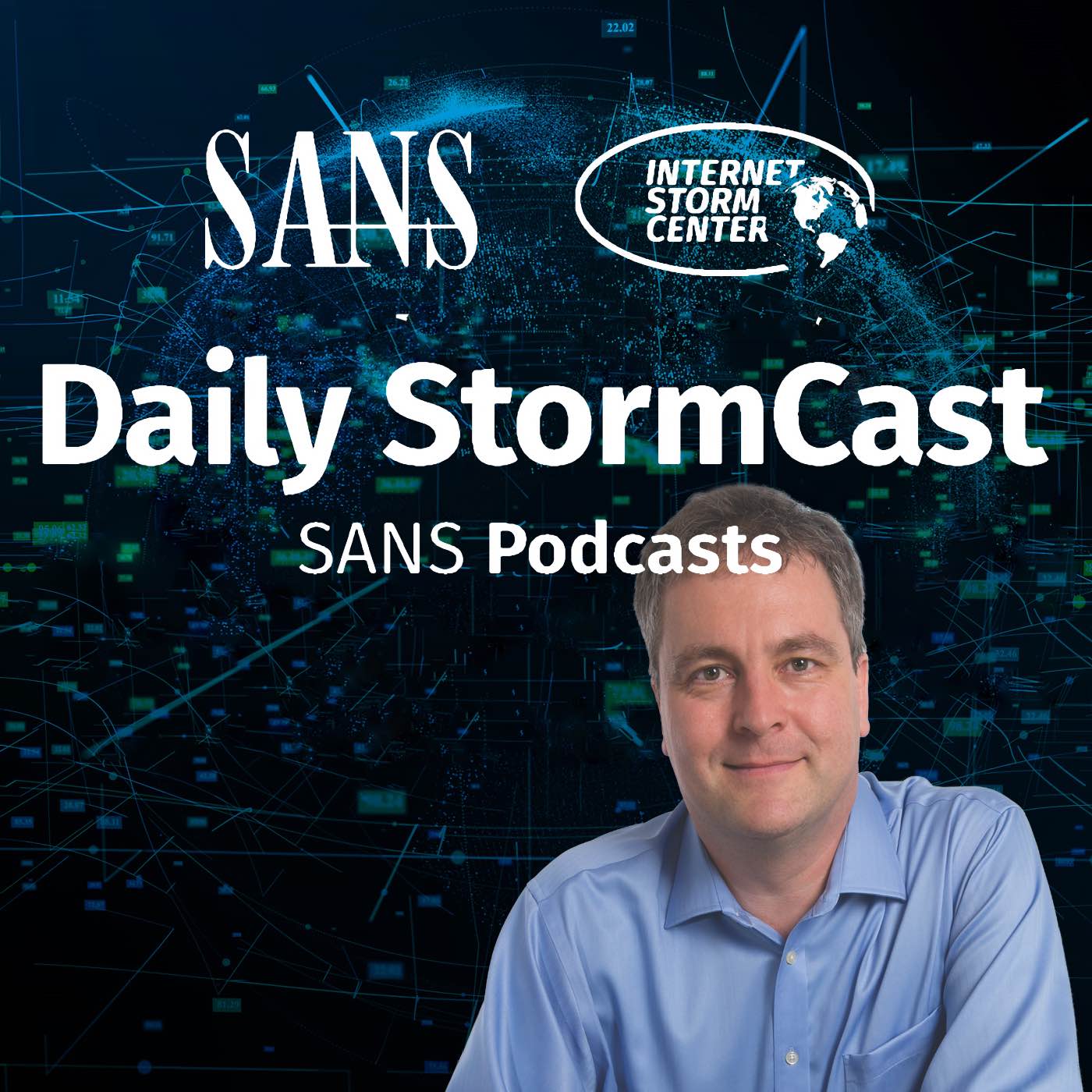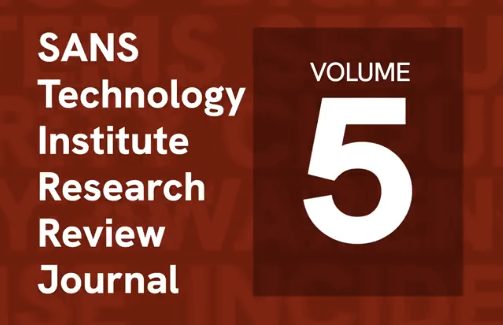Handler on Duty: Didier Stevens
Threat Level: green
Podcast Detail
SANS Stormcast Tuesday, July 29th, 2025:Parasitic Exploits; Cisco ISE Exploit; MyASUS Vuln
If you are not able to play the podcast using the player below: Use this direct link to the audio file: https://traffic.libsyn.com/securitypodcast/9546.mp3
My Next Class
| Application Security: Securing Web Apps, APIs, and Microservices | Orlando | Mar 29th - Apr 3rd 2026 |
| Network Monitoring and Threat Detection In-Depth | Amsterdam | Apr 20th - Apr 25th 2026 |
Parasitic SharePoint Exploits
We are seeing attacks against SharePoint itself and attempts to exploit backdoors left behind by attackers.
https://isc.sans.edu/diary/Parasitic%20Sharepoint%20Exploits/32148
Cisco ISE Vulnerability Exploited
A recently patched vulnerability in Cisco ISE is now being exploited. The Zero Day Initiative has released a blog detailing the exploit chain to obtain code execution as an unauthenticated user.
https://www.zerodayinitiative.com/blog/2025/7/24/cve-2025-20281-cisco-ise-api-unauthenticated-remote-code-execution-vulnerability
MyAsus Vulnerablity
The “MyAsus” tool does not store its access tokens correctly, potentially providing an attacker with access to sensitive functions
https://www.asus.com/content/security-advisory/
Discussion
New Discussions closed for all Podcasts older than two(2) weeks
Please send your comments to our Contact Form
| Application Security: Securing Web Apps, APIs, and Microservices | Orlando | Mar 29th - Apr 3rd 2026 |
| Network Monitoring and Threat Detection In-Depth | Amsterdam | Apr 20th - Apr 25th 2026 |
| Application Security: Securing Web Apps, APIs, and Microservices | San Diego | May 11th - May 16th 2026 |
| Network Monitoring and Threat Detection In-Depth | Online | Arabian Standard Time | Jun 20th - Jun 25th 2026 |
| Network Monitoring and Threat Detection In-Depth | Riyadh | Jun 20th - Jun 25th 2026 |
| Application Security: Securing Web Apps, APIs, and Microservices | Washington | Jul 13th - Jul 18th 2026 |
| Application Security: Securing Web Apps, APIs, and Microservices | Las Vegas | Sep 21st - Sep 26th 2026 |
Podcast Transcript
Hello and welcome to the Tuesday, July 29th, 2025 edition of the SANS Internet StormCenters Stormcast. My name is Johannes Ullrich, recording today from Jacksonville, Florida, and this episode is brought to you by the SANS.edu graduate certificate program in incident response. Yesterday, I think I mentioned these parasitic attacks against the back doors that were left behind by SharePoint exploits, wrote up some of this a little bit today, and also here a quick graph is what I published there, showing how these particular attacks evolved. They started pretty much on the 20th, that's sort of when this entire SharePoint issue sort of hit the news big time, then rose quickly since then somewhat steady, maybe a little drop here the last couple of days, but many of these attacks are also coming from researchers that are just trying to figure out how many systems are affected from these attacks. Now, the other thing I publish as part of this is the different URLs that are being hit here. Interestingly, there's one URL that was hit on the 13th, and also one of the 16th one really was just an exploit. So on the 13th, the URL teams logon.aspx was hit. Not sure. I haven't had a chance to look at this on a real SharePoint server to see if that URL actually exists. I don't think it does exist. So this would be possibly an early left behind the sort of back door that someone was looking for here before the attack sort of really blew up. Then on the 16th, we see the toolpane .aspx. Again, that's from our honeypots. So that's when we saw the initial attacks in our honeypots. And then, of course, it continues on the 19th with spinstall0. They're varying also a little bit than the number here, like spinstall8 was one or spinstallx that we see. And a couple others like xxx.aspx is sort of interesting sys layouts. So maybe something that attempts to fit a little bit better into the overall naming scheme and such to make it less suspicious as a file. Anyway, these attacks are still ongoing. Just as a reminder, if you do see an unpatched SharePoint server, it has been compromised at this point, in particular if it's being exposed. Haven't seen any exploits yet that remove some of these back doors, but that would be sort of logic next step for an attacker to basically remove evidence also after they attack a particular system. So really careful. Look over your logs. Make sure that you're not missing anything. Rebuild. Patch the server. And definitely rotate the machine keys. And the ZeroDay initiative released a blog post with details regarding two related vulnerabilities that were patched by Cisco in June 25th. And then a couple weeks later, a second patch was released around July 17th. These vulnerabilities are now actively exploited according to Cisco. They affect the identity services engine. I think I mentioned them a couple weeks ago when the patch was released for these particular vulnerabilities. And they may get an attacker from being unauthenticated all the way to executing arbitrary code. And this particular blog post goes through all the steps necessary with sample code. So everything that you need to exploit the vulnerability is here and is public. And so far, it's just fair to assume, as Cisco did in the update to their advisory, that these vulnerabilities are now actively being exploited. And you better make sure that your systems are being patched. And ASUS released an update for its MyASUS tool. And now this is often preinstalled software or software that users then later install in order to better be able to control their PCs. The problem with these tools is often that they have far-reaching access to the hardware and software running on the system. In this particular case, one of the vulnerabilities does consist of hard-coded credentials that may give an attacker access to some of that functionality. The release here from ASUS is fairly vague on what is exactly involved and how it could be exploited. But there are often HTTP APIs and such involved. So definitely something that you should be paying attention to and hopefully patch it rather sooner than later. The problem, on the other hand, is that these kind of tools are often on home user PCs, not so much on like organization and enterprise PCs. And as a result, they often do get overlooked when it comes to patching. Well, and this is it for today. So thanks for listening. Thanks for subscribing. Thanks for liking this podcast. And yeah, please leave a good review or at least click on the like or five star button in your favorite podcast platform. Anything like this is appreciated. Thanks and talk to you again tomorrow. Bye.











